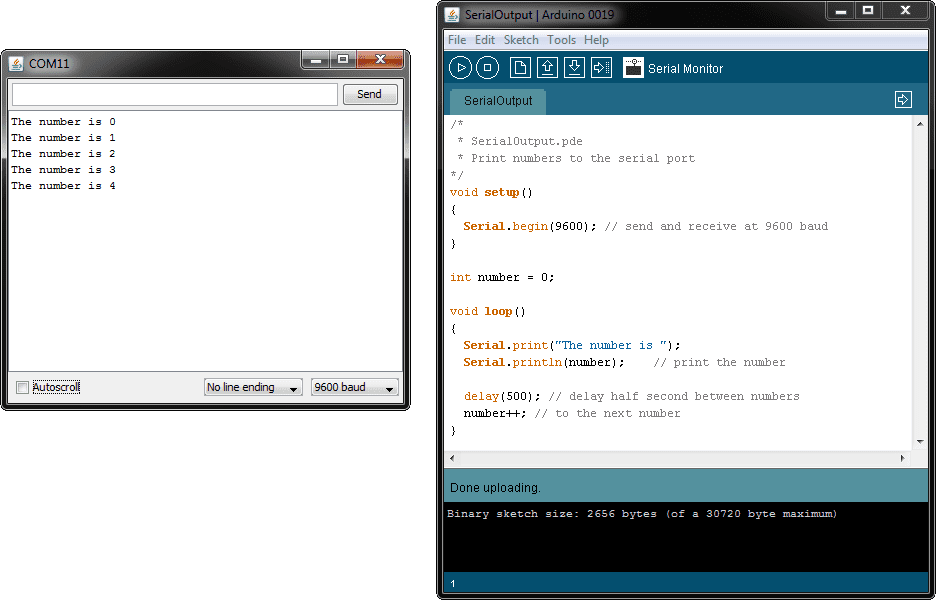
Arduino char math code#
Using three ‘short’ variables instead of three ‘float’ variables made the code 25% quicker-not as dramatic as I had expected, yet a significant improvement. We may lose a little speed because of the increased number of bits, however we are easily able to represent the Arduino’s voltage readings in the range of 0 to 1023 or higher (double or quadruple that), as needed. These variable types are called the signed or unsigned ‘int’ (for all Arduinos except the Due model), the ‘short’ or the ‘word’ (which is identical to the unsigned int).Įither of the signed or unsigned 16-bit integer types is more than adequate for our needs as they can all encompass 10-, 11- or 12-bit numbers. The next larger number type is 16 bits in size and can represent unsigned (positive-only) integers between 5, or signed (positive-or-negative) integers between -32768 and +32767. We want a 10-bit number, however, not an 8-bit number, so the char or byte won’t be enough when reading the Arduino’s analog pins. The ‘char’ type is for characters, i.e., letters, punctuation and special symbols. With signed numbers, 1 bit is reserved to indicate ‘-‘ or ‘+’. The smallest number types in the Arduino are 8 bits, e.g., the signed or unsigned ‘char’ and the ‘byte.’ They offer 256 discrete values, either 0 to 255 or -128 to +127. It’s also possible to request more resolution, e.g., 11- or 12- bit (0–2047 or 0–4095), if the project would benefit from finer data. That’s 1024 possible values, or 2 to the power of 10, hence, 10 bits. The Arduino takes a voltage reading in the analog pins, from 0 to 5V, and converts it to an integer between. What would be a better choice than float variables to use in the Arduino? A 10-bit integer rather than a 32-bit float would be ideal. There could be other problems dragging down the code execution too, so if I find them I’ll post ’em here. The result was that my organ could only respond to movements of my fingers three times per second. On the Arduino, like old-school 8-bit computers of yore, memory and power are precious! They are complicated types of numbers in computing and, hence take up more memory and power.

Float is the nickname for floating-point number, i.e., a number with a decimal point that can move to the left or right to show more or fewer digits. The code that I downloaded uses ‘floats’ for each sensor but I think that that is overkill. Darkness for low notes, brightness for high notes.įirst problem: the Arduino code could be more optimized by using the right type of variable to hold the sensor values. You play music by covering the sensors with your fingers, and allowing various amounts of light to shine between them.


I made a rudimentary ‘light organ’ using photosensors and Max/MSP. Happy New Year, Bonne année, and Frohes neues Jahr!Ģ014 will see me fooling around with an Arduino microcontroller.


 0 kommentar(er)
0 kommentar(er)
